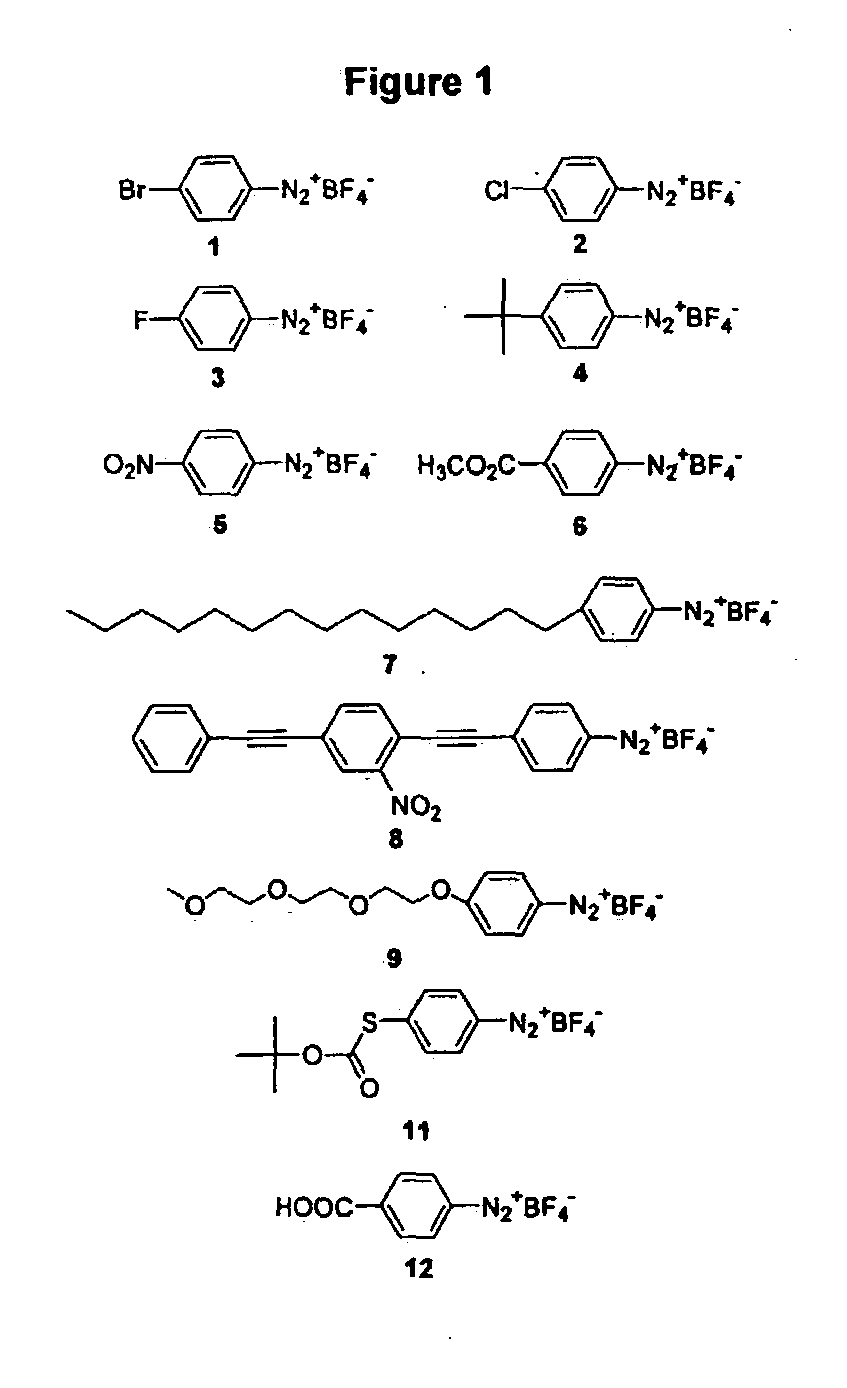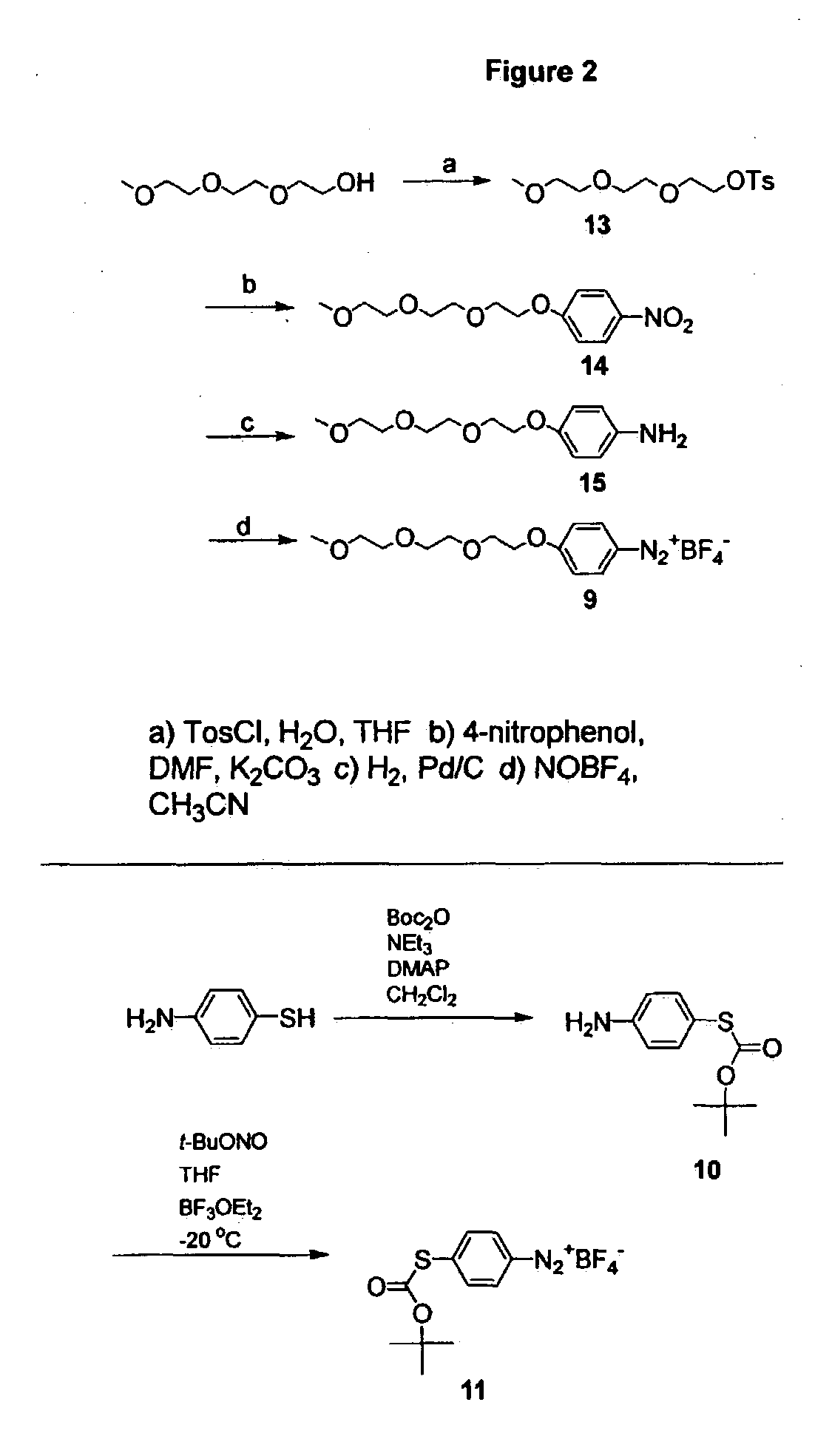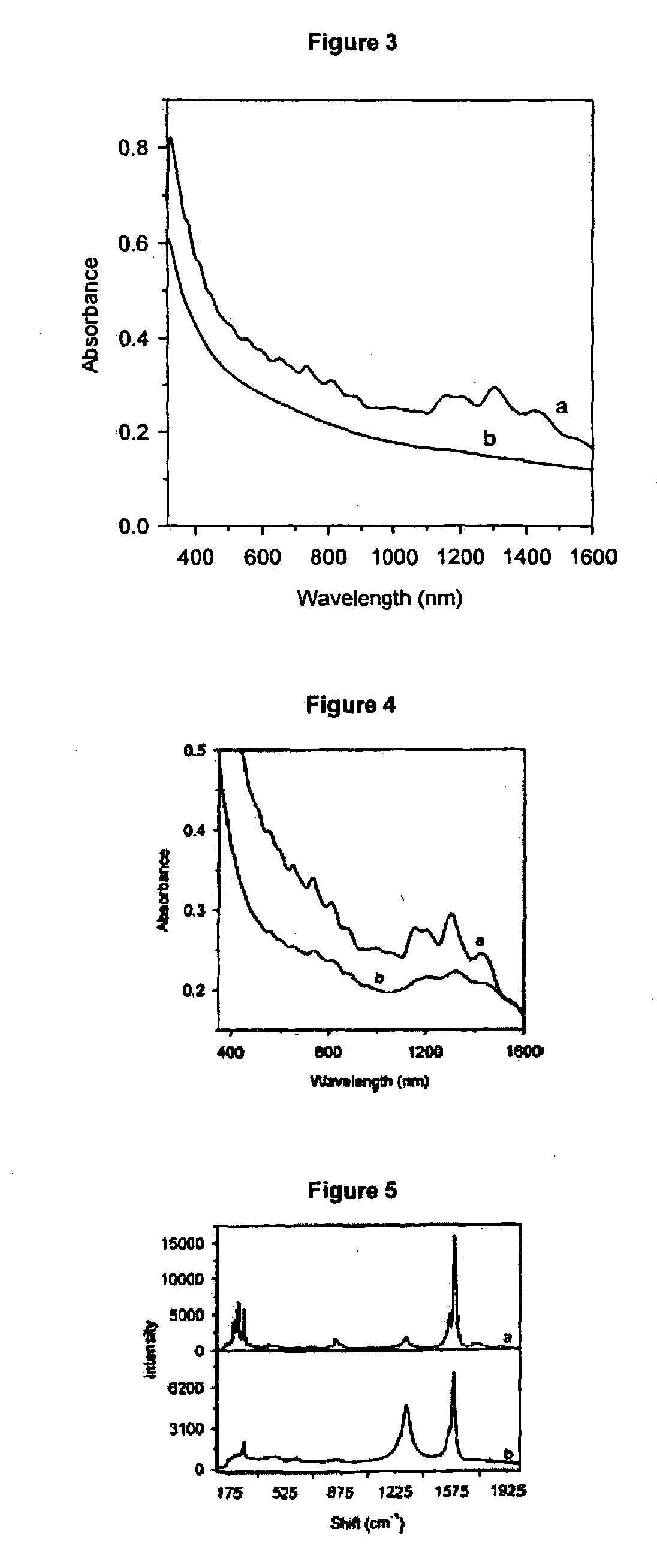Process for making polymers comprising derivatized carbon nanotubes and compositions thereof
- Summary
- Abstract
- Description
- Claims
- Application Information
AI Technical Summary
Benefits of technology
Problems solved by technology
Method used
Image
Examples
Embodiment Construction
[0041] Electrochemical Derivatization of Carbon Nanotubes with Diazonium Species
[0042] Aryl diazonium salts are known to react with electron deficient olefins, known as the Meerwein reaction. Obushak, M. D., et al., Tett. Lett. 1998, 39, 9567-9570. In such solution phase reactions, diazonium salt decomposition is typically catalyzed by a metal salt such as copper(I) chloride, giving a reactive aryl radical. In some cases, the reaction is believed to proceed through an aryl cation. This type of chemistry has been successfully applied to the modification of carbon surfaces via grafting of electrochemically reduced aryl diazonium salts. Delamar, M., et al., Carbon 1997, 35, 801-807; Allongue, P., et al., J. Am Chem. Soc. 1997, 119, 201-207; Ortiz, B., et al., J. Electro. Chem. 1998, 455, 75-81; Saby, C., et al., Langmuir 1997, 13, 6805-6813; Delamar, M, et al., J. Am. Chem. Soc. 1992, 114, 5883-5884. Reduction may give an aryl radical that covalently attaches to the carbon surface. Th...
PUM
| Property | Measurement | Unit |
|---|---|---|
| Temperature | aaaaa | aaaaa |
| Temperature | aaaaa | aaaaa |
| Fraction | aaaaa | aaaaa |
Abstract
Description
Claims
Application Information
 Login to View More
Login to View More - R&D
- Intellectual Property
- Life Sciences
- Materials
- Tech Scout
- Unparalleled Data Quality
- Higher Quality Content
- 60% Fewer Hallucinations
Browse by: Latest US Patents, China's latest patents, Technical Efficacy Thesaurus, Application Domain, Technology Topic, Popular Technical Reports.
© 2025 PatSnap. All rights reserved.Legal|Privacy policy|Modern Slavery Act Transparency Statement|Sitemap|About US| Contact US: help@patsnap.com



